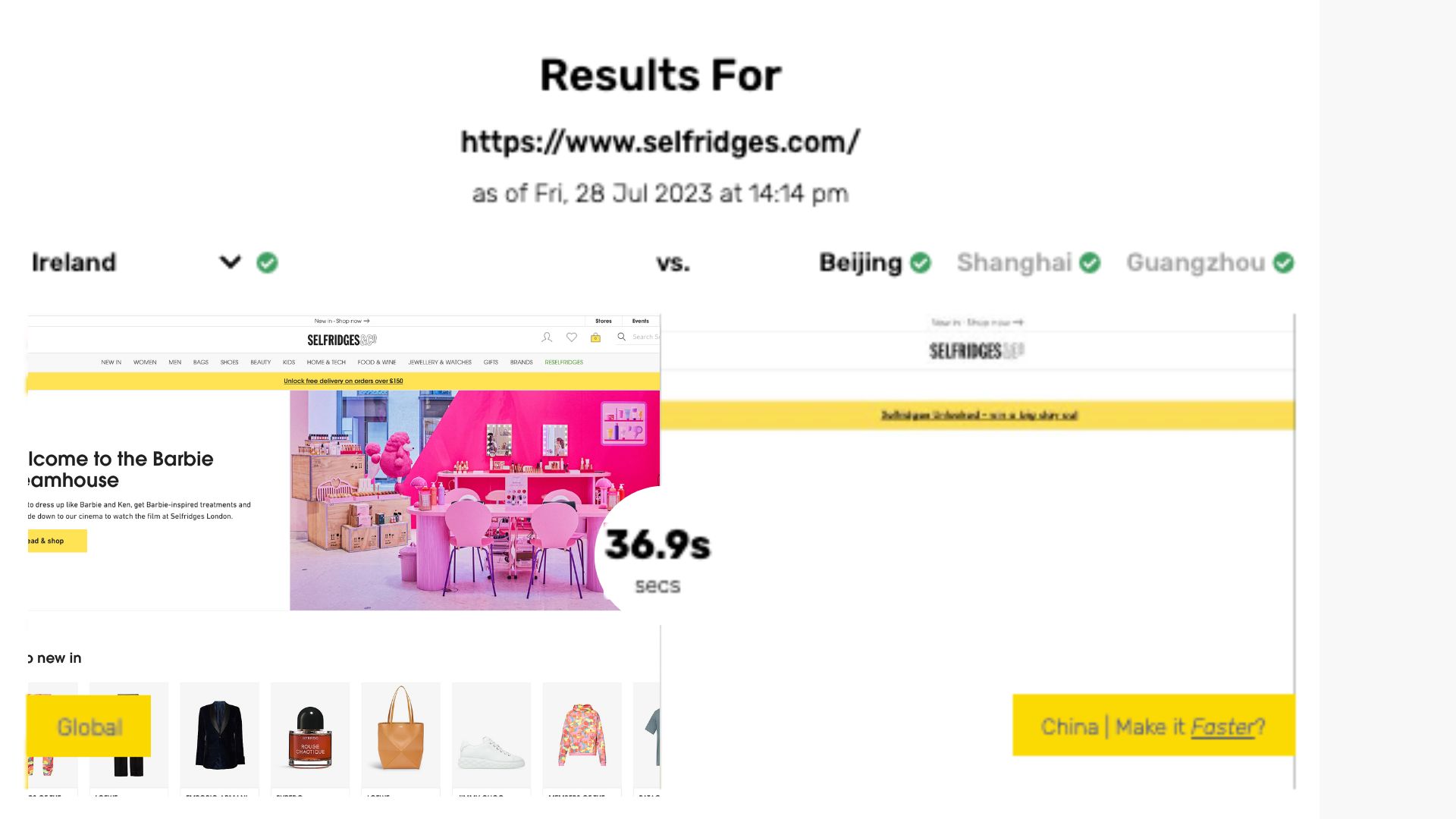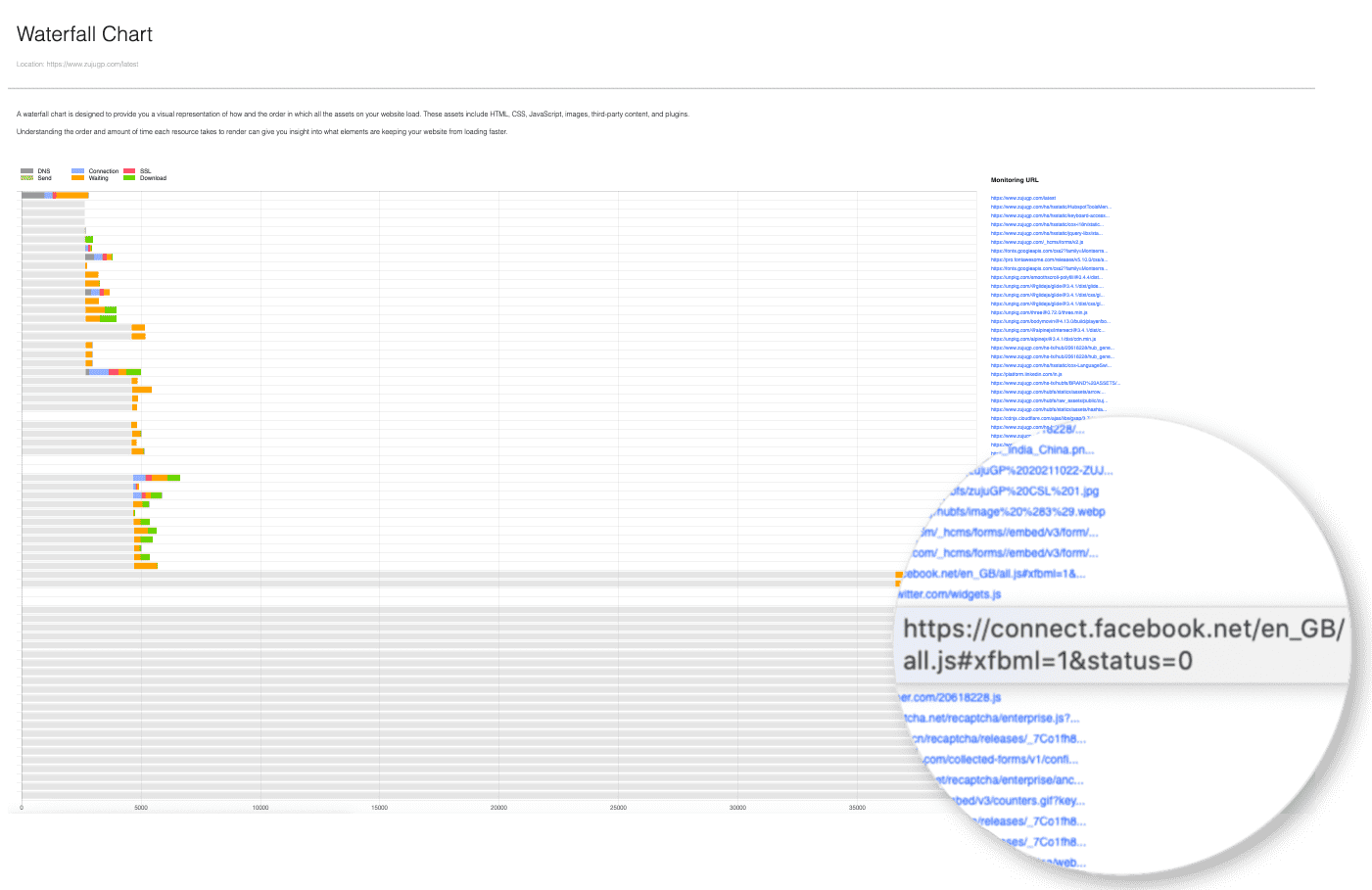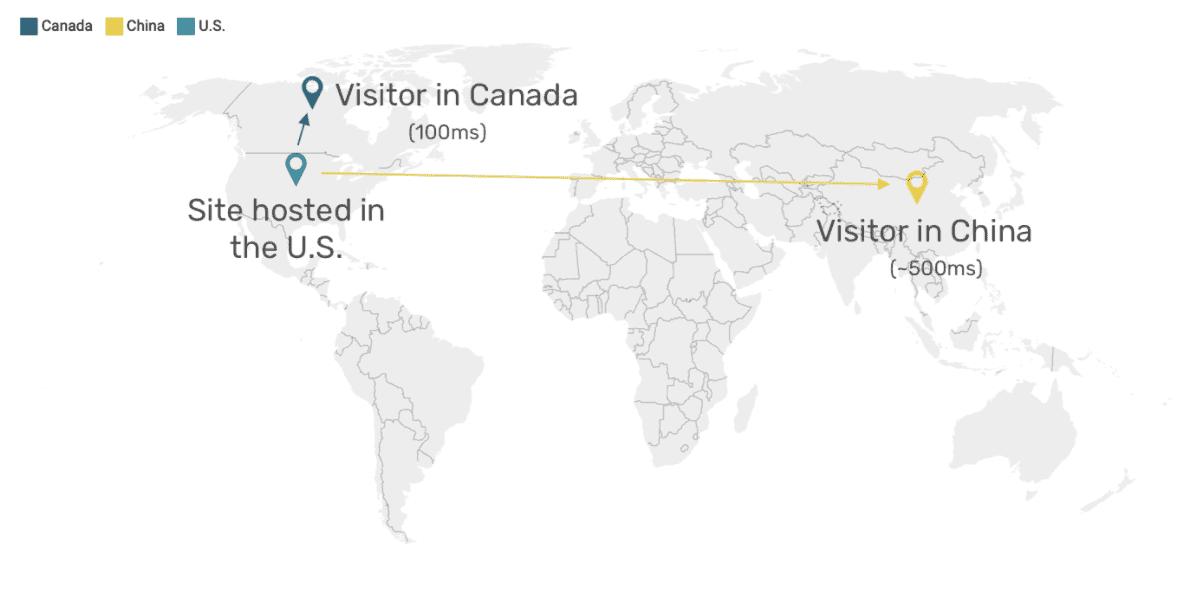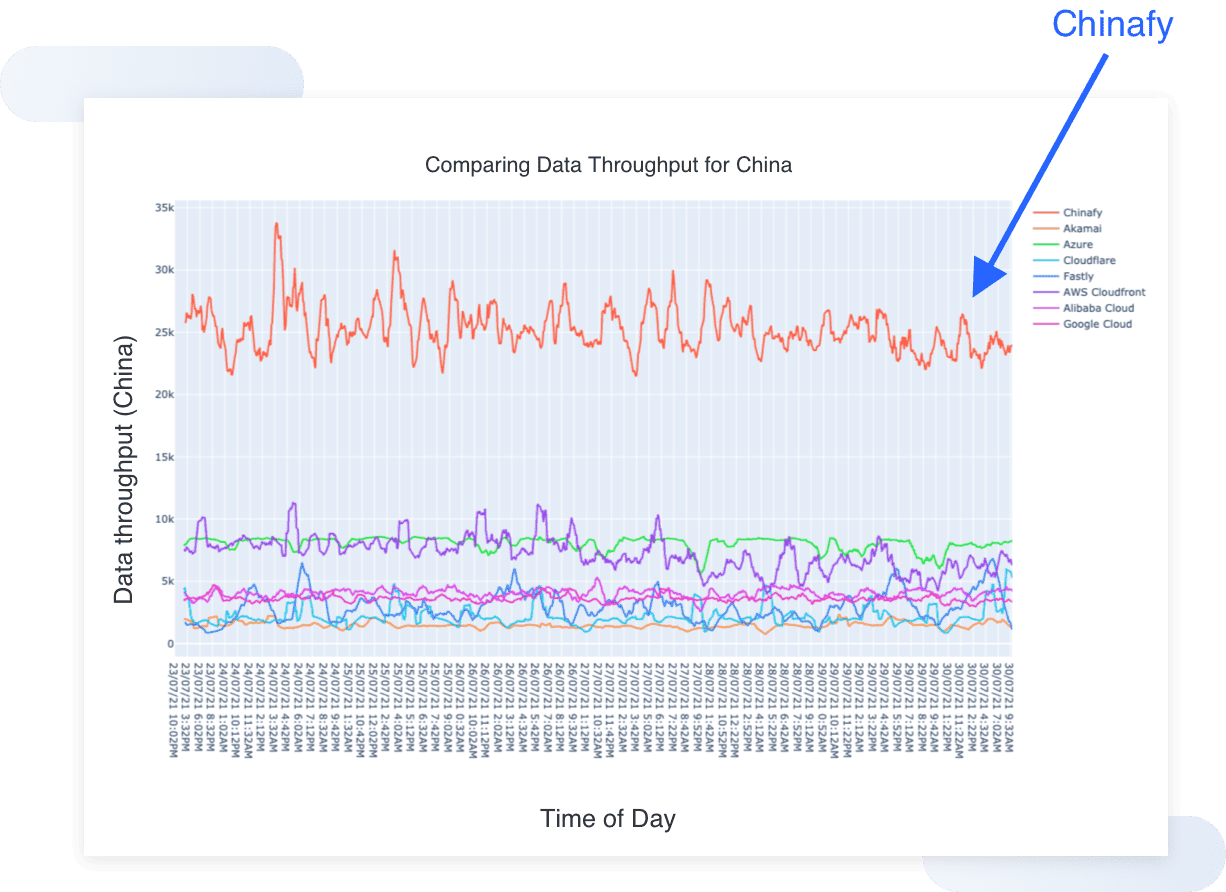1 - Expected post-Chinafy results
How to make my website accessible from China? A better solution with Chinafy
Why does your website not work in China?
In this article, we'll explain the technical issues affecting website accessibility in China and suggest various ways to fix them.
TL;DR There are 3 primary reasons why most websites don’t work in China. They are either...
Entirely and officially inaccessible in China (e.g. Facebook / Google)
Built with resources, plugins, libraries, tools or content management systems that are incompatible or perform poorly in China and/or
Their infrastructure is not configured for China
Does it mean all websites are inaccessible in China? Not quite.
Chances are that most sites actually appear broken and are mistaken as inaccessible because of technical challenges they have when loading from China.
First off, what does it mean for a website to work in China?
The assumption is that when a website is defined as working - it means that it loads within a reasonable time, that users can interact with its functions, and a business can achieve their desired call to actions.
The same websites that might be top of the line and performative outside of China, don't necessary function the same way when loaded from China.
Typically, websites that are not officially blocked or inaccessible in China may still appear to be broken because:
They take much more time to load in China than elsewhere (i.e. upwards of 30 seconds)
Critical Resources (e.g. images and videos) fail to load.

A snippet from our Chinafy Visual Speed Test shows a side by side comparison of a website loaded from Ireland vs China. Note that the China page is missing resources, even 36.9 seconds into the loading process.
Speed, performance and functionality issues website face in China can largely be categorized into these two types of issues:
Code-based incompatibilities arising from code, plugins and third party resources that are incompatible with the Chinese internet
Infrastructural incompatibilities from a set-up that does not perform well from China.
Note that China’s internet ecosystem is unique and quite different to the rest of the world. Best practices and top-tier platforms may not function the same way in China that they do elsewhere, but that does not discount their ability to perform fantastically globally. Custom work is simply required to optimize and localize a website technologically for China.
What is considered a code-based issue in China?
There are a number of technologies that are blocked or slow to load in China.
This includes essential libraries widely used by developers globally, popular plugins, and or default components that website building platforms inherently include out of the box.
Most modern websites are composed of hundreds of these resources.
When a browser attempts to load a blocked resource, the web browser will keep trying to retrieve the file for a period of time before it moves onto the next resource. As a result, the loading process get's 'stuck'. This blocked resource then interferes with both the total loading time of the site and also impacts the functionality of the site after parts don’t load at all.
We can use the example below.
This waterfall shows when a China visitor attempted to load resources past Facebook trackers, a resource that is blocked in China.
Note that even after 35 seconds, only 30% of this website's resources have loaded properly.

What happens when your site has blocked or slow-loading resources? You end up with a site that loads both partially and slowly, at times taking upwards of 30 seconds
What are infrastructure-related issues when it comes to China?
Most websites - irrespective of how they're built (e.g. WordPress, Shopify, Adobe, Drupal) - do not have an infrastructure that's specifically designed for China.
Traditionally, this is not as much of an issue for markets outside of China, as even distanced regions generally are able to load within similar time ranges.
However, the Chinese internet has been created to be a little different from the rest across both management, regulations, and behavior.
The technical limitations faced come down to two key infrastructural components:
The hosting servers both for the website, and also the servers hosting their third party tools &
Content delivery network (CDN) providers
For example, let’s assume your website’s media assets are hosted in the US and delivered within North American using Fastly’s Global CDN.
The combination of a US server with North America CDNs would generally be great for performance. That is, for visitors outside of China.

Does adding a CDN to your website help then? And what about other options? Let’s take a closer look at:
3 Common partial solutions to making websites work in China & their misconceptions
1. Content Delivery Network (CDN)
A Content Delivery Network (CDN) is a distributed network of servers that stores your web resources nearer your end-users, improving performance. CDNs targeted for China can be great for accelerating regional delivery. However, whether they are on-shore in China or near China, CDNs are at best, a partial fix as they still cannot accelerate third-party resources nor resolve any inaccessible resources in China.
Videos embedded on YouTube and Vimeo, Facebook trackers, and other third party resources will still be inaccessible, contributing to the issues of slow loading on the site level.
2. Hosting in China
Hosting a website in China would legally require the acquisition of an ICP License in order to host on-shore. This would also require you to evolve your site on an ongoing basis, managing a list of blocked resources to find China-friendly alternatives.
What is an ICP? Need an ICP? Contact Chinafy ICP Support to enquire further.
3. Virtual Private Network (VPN)
Virtual Private Networks (VPNs) secure and encrypt connections by routing their traffic through a server located in a different location anonymously.
While users using VPNs may have success with accessing blocked or inaccessible content in China, they do not address website inaccessibility arising from latency or poor page loading performance.
Usage of non-verified VPNs are also frowned upon by the Chinese government, and may have legal consequences for users. Furthermore, the assumption cannot be made that a user accessing your site has access to a VPN, and cannot be a primary solution.
A Better Way to Make Your Website Work In China: Chinafy
This is where Chinafy comes in.
Chinafy fills in the gaps and compliments a strong technical stack by addressing the components that are largely untouched by CDNs, servers and other partial solutions. It is for this reason that Chinafy is a close partner to some of the world’s leading cloud solution providers like AWS, Alibaba Cloud and more.
Chinafy optimizes websites to achieve near-native performance, with an offshore set-up. Companies that fulfill the onshore hosting prerequisites also have the added option to use onshore CDN services.

Integrating both software (i.e. code) and infrastructure (i.e. hardware), Chinafy is a highly tuned, complex solution that can be bolted onto almost any site.
By combining resource optimizations and managed infrastructure solutions, Chinafy can work in 2 weeks or less to achieve an optimized and fully-managed version of your website that’s 6-8x faster in China.
Click Get Started for Chinafy to review your website today



1 - Expected post-Chinafy results






























